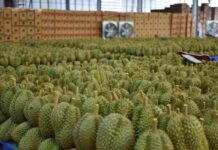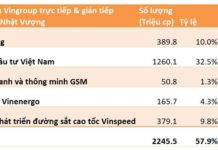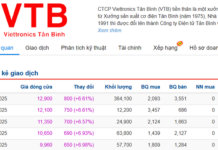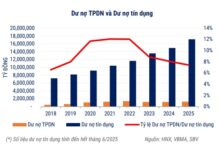A $260,000 Paper Table: The Story of Trần Thiện Nhứt’s Unique Creations
Amidst the machinery and stacks of coarse paper in Trần Thiện Nhứt’s workshop in Thủ Đức lies a sleek, black lacquered table—a swan among ducks. Accompanying it are two black chairs, shaped like teeth, both unique and whimsical. In another corner sits a hippo-shaped seat, its patina resembling oxidized copper. These furniture pieces are special; they are crafted from compressed paper pulp, the same material used by farmers for egg trays.

Hippo chair crafted from recycled cardboard
This distinct style of furniture is highly valued in the US. Three years ago, Nhứt created his first piece—a table measuring 3m long, 1.3m wide, and weighing 60kg. It was exported to the US with a price tag of $260,000. However, when offered in Vietnam for $2,000, it found no buyers and remained in the workshop for years.
‘Nhứt’s Solo Company’, as he jokingly refers to his one-man operation, exports one or two containers to the US and France annually. It was only in July that he hired an accountant, previously handling everything himself since 2013—from client meetings and idea generation to design, production, delivery, taxes, and debt collection.
Nhứt’s journey to the international art scene began with a French partner who appreciated his work. Together, they co-created and exported art. For the past five years, however, Nhứt has managed all aspects of the business on his own.

Artist Trần Thiện Nhứt beside a recycled chair popular in the US market
Nhứt’s approach to exporting art is unique. He offers his creations at the Drouot Auction House in Paris, participating in live auctions. This strategy ensures quick sales and a global reach, although it can be challenging for a young artist to partner with such an established institution. Drouot is considered the linchpin of the French and international art markets, often auctioning pieces worth hundreds of thousands to millions of euros.
Nhứt vividly recalls his first auction, his heart pounding as he watched his lot come up for sale. Fortunately, the items sold within an hour. The subsequent container auction also went well, with bids coming in steadily for about two hours. Gradually, word spread, and American clients began contacting him directly.
Nhứt doesn’t cater to his clients’ tastes; instead, he creates art that satisfies his own criteria. His furniture combines sculpture and functionality, elevating it beyond mere tables and chairs. Westerners appreciate his work for its sustainability and aesthetic value.
Another of Nhứt’s creations—large paper globes (1.65m tall) with classical paintings printed on them—has been a hit with museums, libraries, and churches. So far, he has sold about 12 pairs at French auctions, with prices ranging from the teens to the thirties of thousands of euros. “The income sustains the workshop and me,” Nhứt says.

Trần Thiện Nhứt on one of his forest trips; most of his creations are inspired by nature
The Story of Eco-Friendly Materials
Nhứt’s sculptures first appeared in the French market in 2013, initially crafted from concrete, stone, and plastic. However, concerned about the toxic remnants of these materials, he began exploring alternatives that offered both durability and aesthetic appeal. This led him to discover the potential of recycled cardboard.
Nhứt sources recycled paper from various places, grinding and binding it with non-toxic adhesive. His furniture pieces, such as the stone-like chairs and tables made from cardboard, are visually deceptive.
When asked about the durability of his paper creations, Nhứt confidently asserts that in over a decade, he has never received negative feedback regarding quality or longevity. His products have withstood the tropical heat of over 40°C and the frigid temperatures of sub-zero degrees Celsius. Furthermore, at the end of their lifespan, these items can be recycled or safely returned to the earth as compost without causing environmental harm.
Born into a poor family, Nhứt graduated from high school and worked as a stone cutter for three years before enrolling in Ho Chi Minh City University of Fine Arts. When taking the entrance exam, he carried a bucket, brushes, paints, and water, leading his peers to remind him that those were for painting, not the exam. Surprisingly, despite not studying or attending a fine arts intermediate school like most candidates, Nhứt ranked second in the sculpture major.
This unique young man, who grew up in the Central Highlands, loves the forest and everything in it. His creations are infused with nature—leaves, tree roots, alligators, dinosaurs, huskies, clouds, and sand dunes. He always carries a sketchbook and pen, ready to capture ideas whenever inspiration strikes. “I want to bring nature back to the city through my creations,” Nhứt says.
As Nhứt delved deeper into recycling, he became increasingly fascinated. He is currently experimenting with a new material—sand and food-grade adhesive—to create sculptures. American and European partners have requested a vase that can dissolve in water within 10 to 15 minutes without harming the environment. Nhứt successfully crafted a vase from edible flour and starch, which dissolved in water in just seven minutes. These clients now hope for large-scale production. Nhứt plans to expand his material sources to include not just paper pulp but also wood, bamboo, coconut fiber, corn cores, and straw.
Trần Thiện Nhứt, born in 1981, graduated from Ho Chi Minh City University of Fine Arts with a major in sculpture. He has built a reputation for creating artworks using natural or recycled materials.
His pieces are exhibited in galleries such as Maison Gerard Paris (France) and Valerie Goodman (USA).




































